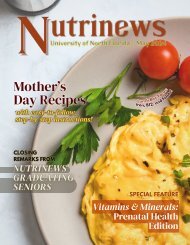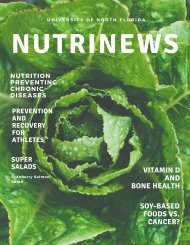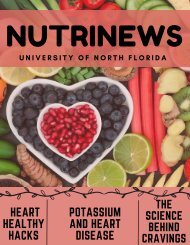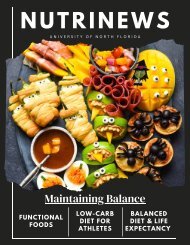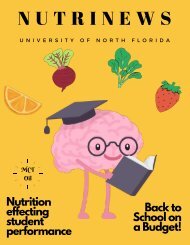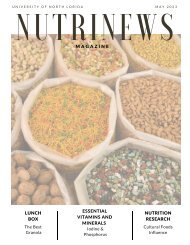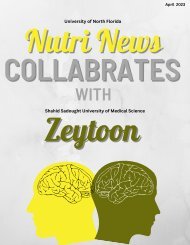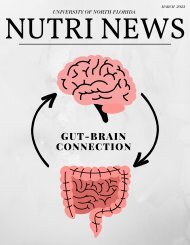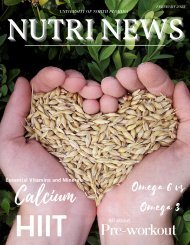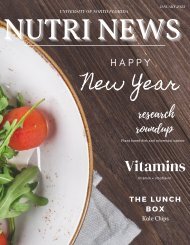April Issue
Hello Ospreys! This April issue features exciting updates on the 2021 spring graduation ceremony! We also highlight cauliflower in our Shopping in Season segment, Easy Ways to Move More and Sit Less and our Student Spotlight is on Mami Okada, who is a senior in the nutrition program. Happy reading and good luck with the rest of the semester!
Hello Ospreys!
This April issue features exciting updates on the 2021 spring graduation ceremony! We also highlight cauliflower in our Shopping in Season segment, Easy Ways to Move More and Sit Less and our Student Spotlight is on Mami Okada, who is a senior in the nutrition program.
Happy reading and good luck with the rest of the semester!
You also want an ePaper? Increase the reach of your titles
YUMPU automatically turns print PDFs into web optimized ePapers that Google loves.
Ways to Move More and<br />
Easy<br />
Less Sit<br />
By: Tamara Marsh<br />
A sedentary lifestyle increases risks of high blood pressure, diabetes, obesity,<br />
and heart disease, deep-vein thrombosis (i.e. blood clots within deep veins),<br />
and abnormal cholesterol levels. Sitting for long periods even if you are<br />
moderately active tightens the hamstring muscles and hip flexors and stiffens<br />
joints. Excessively tight hip flexors and hamstrings lead to walking and<br />
balancing difficulties, lower back pain, and knee stiffness.1,2<br />
In one study, researchers found high levels of the total amount of daily time of<br />
sitting are linked to increased chances of heart disease and diabetes outside<br />
of the physical activity. They concluded the total amount of sitting on a daily<br />
basis should be reduced.3<br />
In another study, researchers found when sedentary type 2 diabetes subjects<br />
shortened their sitting time and replaced it with moderate physical activity and<br />
standing, they experienced a positive change in their post-meal metabolic<br />
levels. They concluded breaking up sitting time has a positive effect on<br />
metabolic levels. However, the physical activity type, intensity, and frequency<br />
to offset the harmful effects of prolonged sitting will vary from person to<br />
person. Further studies are needed to determine the physical activity<br />
procedure (type, volume, frequency, and intensity) to break prolonged time<br />
spent sitting in various populations.4<br />
The best way to combat the risk of prolonged sitting is to reduce total sitting<br />
less and move more.<br />
7<br />
time and take standing or physical activity breaks. Here are some ways to sit




